News

President Ranil speaks to Indian singing competition winner SL’s Kilmeesha
President extends congratulations to Sri Lankan Kilmeesha Uthayaseelan on victory in Indian singing competition
In a gracious gesture, President Ranil Wickremesinghe conveyed his heartfelt congratulations to the Sri Lankan talent Kilmeesha Uthayaseelan, who emerged victorious in the “Sa Re Ga Ma Pa Li’ Champs Season 03” reality competition hosted by the “Zee Tamil” channel in the state of Tamil Nadu, India.
Hailing from the Jaffna region, the 14-year-old girl has made history as the first Sri Lankan girl to clinch victory in an Indian reality competition.
President Wickremesinghe personally reached out to Kilmeesha Uthayaseelan via phone to commend her exceptional skills and acknowledge the honour she has brought to the nation.
In addition to recognizing her achievement, the President conveyed his blessings for her on-going educational pursuits and extended compliments for her promising future in the field of music.
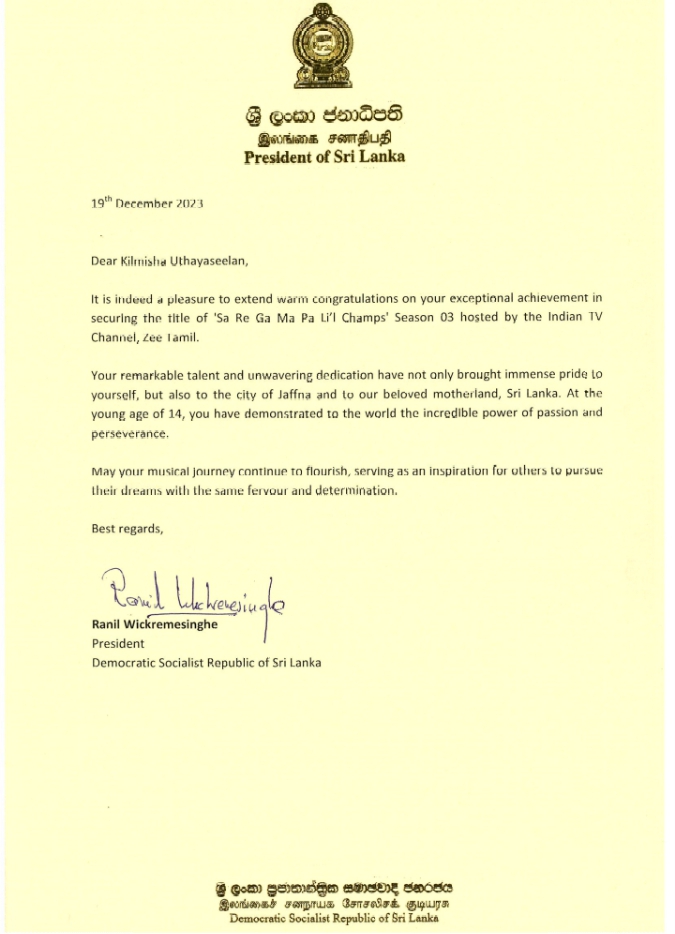
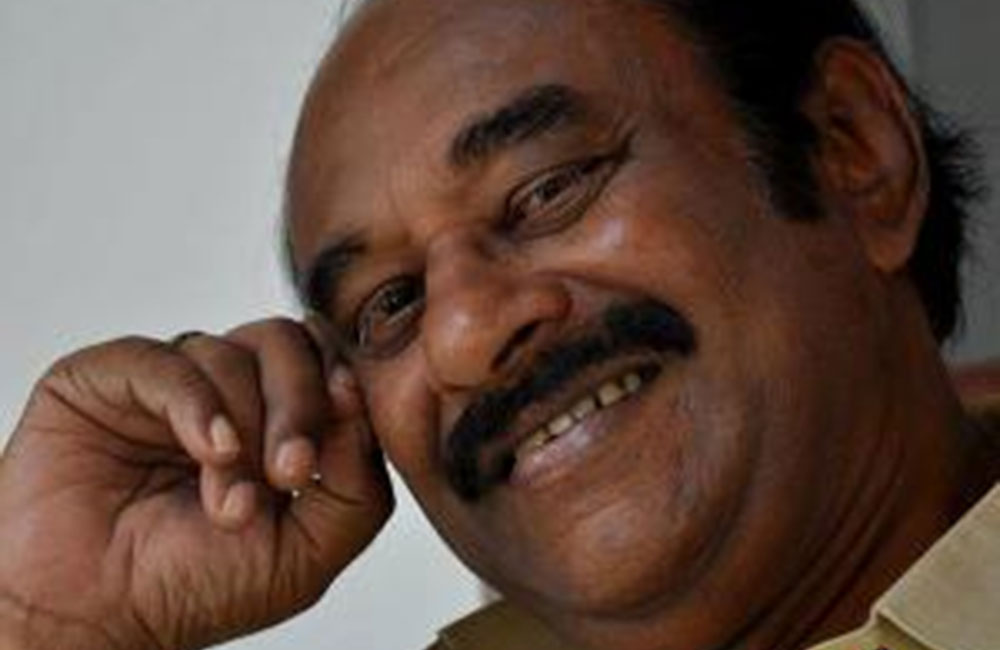
Veteran actor Lionel Wickrama passes away
Veteran Sri Lankan actor Lionel Wickrama has passed away at the age of 77, according to family sources.
Lionel Wickrama is known for his roles in several Sri Lankan movies such as Deveni Warama (2017), Karumakkarayo (1980) and Sakkarang (2015).
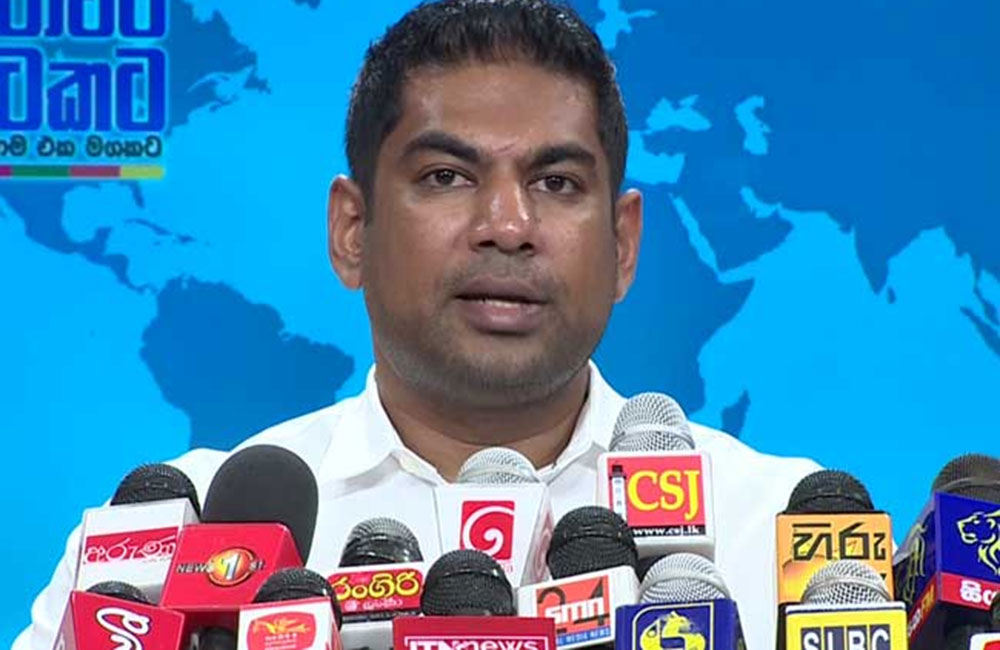
Electricity tariffs to be reduced in January - Minister
Minister of Power and Energy Kanchana Wijesekera has emphasized that electricity tariffs will likely be reduced to earlier rates during the tariff revision scheduled for January 2024, as hydropower is currently being generated at maximum capacity.
Joining a media briefing taking place at the Presidential Media Centre (PMC) this afternoon (19), Wijesekera stated that the previous tariff hike in October was carried out in view of the higher cost of electricity generation due to usage of fossil fuel, prompted by the arid weather conditions.
“However, the weather conditions have now changed. As we received rainfall during the past two months and the rainfall is expected to continue for two more weeks, the Ceylon Electricity Board (CEB) has informed us that the electricity tariff can be revised. During the tariff revision, the increased tariff can be reduced”, he said.
He mentioned that accordingly, the government will be able to provide some relief to the public during the next tariff revision in January, after taking into consideration the balance sheets of the CEB in December.
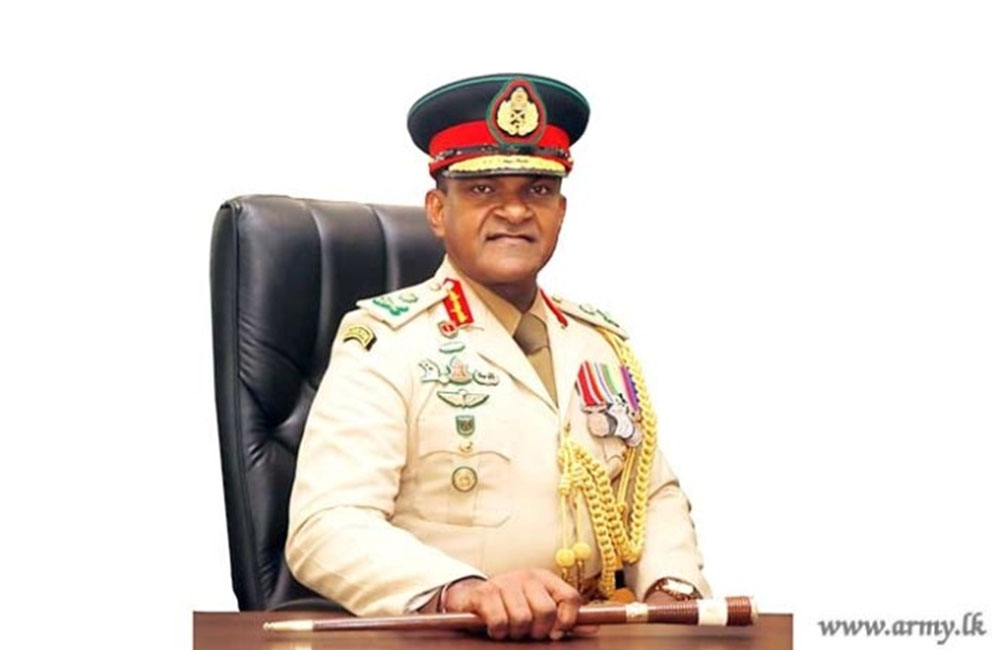
Maj. Gen. Harendra Pieris appointed new Chief of Staff of Army
Major General W.H.K.S Peiris RWP RSP VSV USP ndu of Gajaba Regiment has been appointed as the new Chief of Staff of the Sri Lanka Army with effect from 16 December 2023.
Prior to his new appointment, he has been serving as the Commander, Security Forces - West.
Here is a brief profile of Major General W.H.K.S Peiris RWP RSP VSV USP ndu;
Born on 6th June 1969, he is a proud product of St Anthony's Boys School in Panadura and Thurstan College, Colombo. During his schooling, he excelled in studies and athletics earning honour and fame to the school.
He joined the Sri Lanka Army as an Officer Cadet on 26th July 1988 in the Intake 30. Upon successful completion of the basic military training at the Sri Lanka Military Academy, Diyatalawa, he was commissioned in the rank of Second Lieutenant and was posted to the Gajaba Regiment (GR) which is an elegant Infantry Regiment of the Sri Lanka Army on 09th June 1990. After being steadily elevated to subsequent ranks in the course of the span of service in the Army, he was promoted to the rank of Major General on 07 May 2021.
Throughout his military career, he has served in Command, Staff, and Instructional appointments exemplifying his extraordinary capacities in respective appointments in the Sri Lanka Army. He has extensively pledged exceptional dedication towards assignments of combat duties during the humanitarian operation in the North and East of the country before May 2009.
His appointments include Platoon Commander, Officer Commanding, ADC to Major General S.T.T Jayasundara (Rtd), Adjutant - Army Training School, Operation and Training Company Commander, Security Officer at Base Ordnance Deport Maradana, General Staff Officer II - 21 Infantry Division, Second in Command - 3 GR, Staff Officer II - Quarter Master General Branch, Staff Officer II - Directorate of Personal Administration, Staff Officer II - Transits Camp Anuradapura, Security Coordinator -Ministry of Defence, Commanding Officer - 8 GR, Brigade Commander of 522 Infantry Brigade, Center Commandant - Regimental HQ, Director - Directorate of Movement, General Officer Commanding of 52 Infantry Division, Military Advisor - United Nations Headquarters New York, Commander, Security Force - West and Colonel Commandant of Military Intelligence Corps. Major General W.H.K.S Peiris RWP RSP VSV USP ndu followed many local and foreign courses, such as Platoon Commander’s Tactics Course, Battalion Support Weapon Course, Basic Parachute Course, Air Mobile Course, Young Officer Course - India, Junior Command course - India, Capstone Exercise ‘Shanty Prayas’ - Nepal, Senior Command Course - India, Asia Pacific Centre For Security Studies Comprehensive Crisis Management Seminar - Honolulu - Hawaii and Defence and Strategic Studies Programme in China.
The Senior Officer has been adorned with gallantry awards of 'Rana Wickrama Padakkama' (RWP) and 'Rana Sura Padakkama' (RSP) for his distinguished conduct in the face of the enemy and recipient of Videsha Seva Padakkama (VSV) in recognition of his distinguished service to the organization.
Major General W.H.K.S Peiris RWP RSP VSV USP ndu is also the Colonel Commandant of Military Intelligence Corps and married to Mrs Dilupa Peiris and blessed with three daughters.
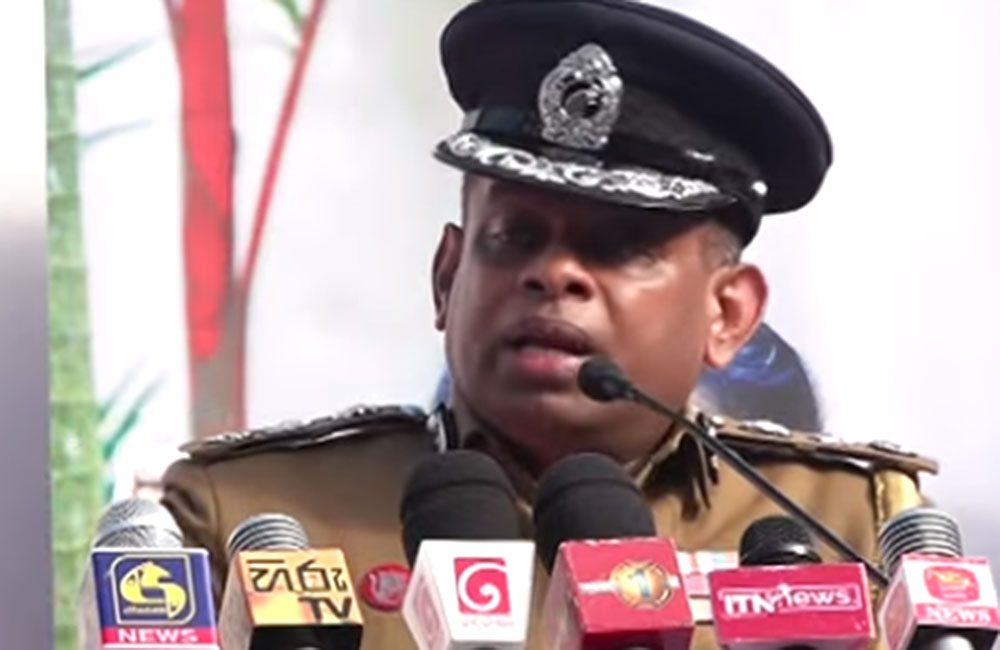
Acting IGP instructs to remove activities harmful to children near schools
The Acting Inspector General of Police (IGP) Deshabandu Tennakoon has instructed to take necessary measures to inspect and remove all activities that could be harmful to children within 500 metres of schools, before the start of the new school term in February 2024.
“There is a discourse within the society regarding certain things within and surrounding the schools that are unsuitable for children. Yesterday I ordered the high-ranking police officers across Sri Lanka to remove all places that sell, distribute or propagate activities harmful for schoolchildren, which are located within a 500-metre radius of all schools”, Tennakoon said.
“When the next school term commences in February following the term holidays, I will not allow any such operations to continue in this country”, he said speaking during an event.
He further highlighted that strict action will be taken against such activities and establishments.
The Acting IGP also stated that measures will be taken to remove all the things that unfavorably affect the school environment, by using the powers of Sri Lanka Police.

Wanindu to become captain of T20 squad?
Cricket sources have reported that the new Sri Lanka Cricket (SLC) Selection Committee, chaired by former national cricketer Upul Tharanga, is likely to name a new skipper for the T20 squad.
Accordingly, all-rounder Wanindu Hasaranga is tipped to be named the captain of the Sri Lanka T20 squad, while it has been confirmed that Dimuth Karunaratne will remain the Test Captain.
The SLC Selection Committee is slated to meet again on Monday (18 Dec.), and make a decision ahead of Zimbabwe’s Tour of Sri Lanka in January 2024.
Foreign media further reported that Charith Asalanka is likely to be appointed as the Vice Captain of both, the T20 and ODI teams, while Kusal Mendis may be appointed as the captain of the ODI team
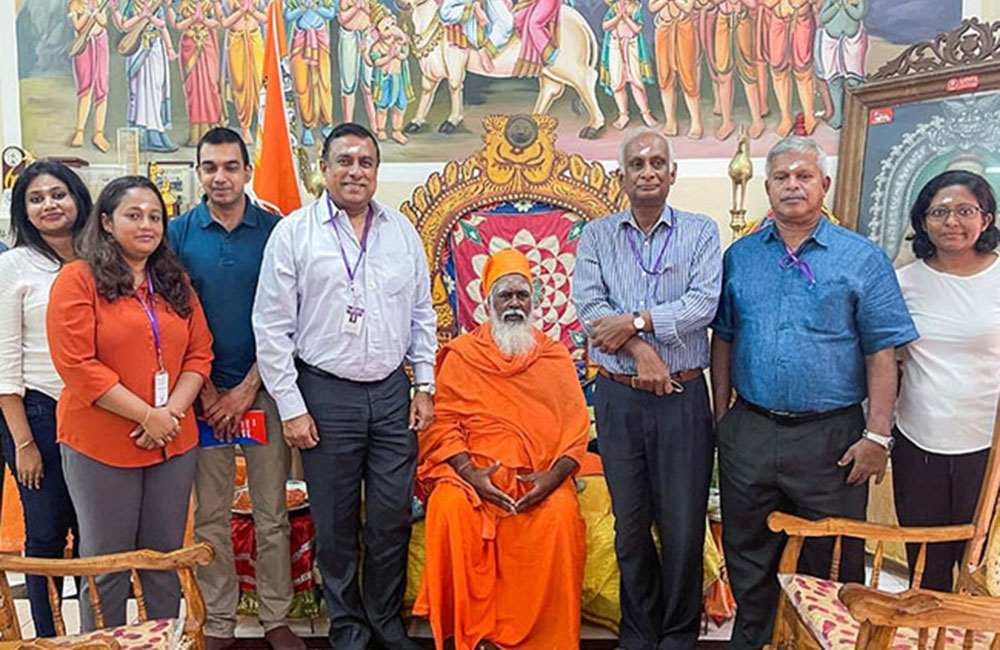
Interim Secretariat for Truth and Reconciliation Mechanism holds public consultation in Jaffna
The Interim Secretariat for the Truth and Reconciliation Mechanism (ISTRM) has successfully commenced its ‘National Provincial Public Consultations’ from the Northern province, Jaffna.
The ISTRM convened with key stakeholders, including civil society organizations, religious leaders, senior professors and lecturers’ from the University of Jaffna, grassroots communities, women’s rights movements from December 10th to December 12th, the President’s Media Division (PMD) said.
The ISTRM delegation’s visit to Jaffna was aimed at gathering insights and recommendations to formulate a sustainable framework for national unity and reconciliation. Discussions included a comprehensive examination of community challenges and key issues that have been an impediment towards building sustainable peace and reconciliation.
Officials of the Interim Secretariat held a comprehensive consultation with prominent religious figures, including Chief Priest at Nallur Kovil Maikundal Swami Kurukkal, Bishop of Jaffna Diocese Rt. Rev. Dr. Justin B Gnanapragasam,Ven. Damika Thero of the Jaffna Naga Vihara.
The religious leaders conveyed the expectations, views and concerns of the public and offered prayers and blessings for the success of reconciliation activities, emphasizing the importance of ethnic harmony in the country, it added.
During the interactions, Director General of ISTRM Dr. Asanga Gunawansa briefed the religious leaders and all participants at the consultations on the activities of the Interim Secretariat and provided insights into the operations of the Independent Commission for Truth, Unity and Reconciliation which is to be established by an Act of parliament.
With the objective of building an inclusive policy framework for national unity and reconciliation, the Interim Secretariat also gathered views from various stakeholders, including civil society organizations, Senior Government Officials of Jaffna, Senior Academics from the University of Jaffna, professional experts, and representatives of Youth Groups and Women’s Rights movements. These consultations aim to ensure a comprehensive understanding of the perspectives and concerns of diverse segments of the community.
Executive to the Director General and Legal Ashvini Hapangama, Head of the Secretariat’s Policy Division Dr. Yuvi Thangarajah, and senior officials from the Public Relations and Policy division of the ISTRM were present during the comprehensive public consultation process with key stakeholders, according to the PMD.
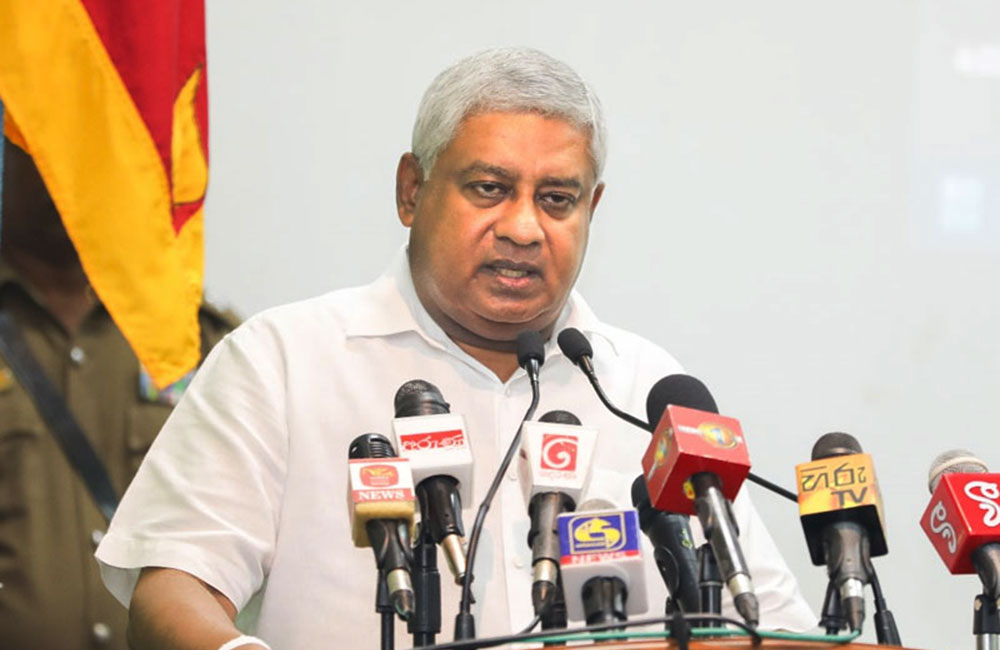
Tiran ready to face any challenge
Public security minister Tiran Alles says he remains prepared to face any challenge to curb crimes within the next six months.
“Contribution and support from the public will be sought for this national task. We should treat them cordially. Then, their support will come definitely,” he said at a meeting of top officials in Colombo.
Speaking further, Alles said the setting up of community police committees across the country has not taken place properly within the specified timeframe.
He expected all police officers to contribute towards their full formation within the next few weeks.
Proper implementation of the plans will enable us to overcome 75 per cent of the challenges, he said.
The underworld is using its drug money to fund false propaganda and mud-slinging at him and the police via social media, the minister claimed.
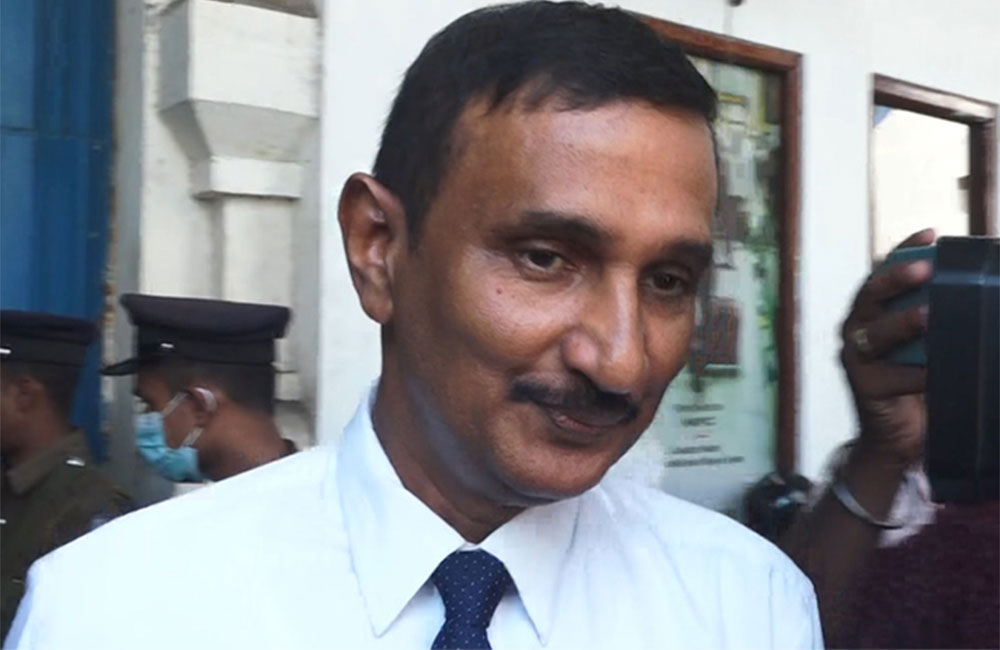
Ex-Health Chief Arrested in Sri Lanka Over Fake Drug Scandal
Janaka Sri Chandragupta, the former Secretary of the Ministry of Health, was arrested by the Criminal Investigation Department (CID) in connection with an investigation into the distribution of suspected counterfeit human immunoglobulin medication.
Chandragupta had presented himself to the CID earlier in the day to provide a statement regarding the matter.
This development follows the previous arrests of several other individuals in the case, including Dr. Kapila Wickramanayake, the former Director of the Medical Supplies Division and the owner of the company alleged to have supplied the counterfeit human immunoglobulin medication to the Ministry of Health.
All these individuals are currently held in remand custody.
Preliminary court proceedings have revealed that the medication in question is suspected to be counterfeit.
Initial reports suggested that it may have been administered to as many as 2,000 patients within Sri Lanka.
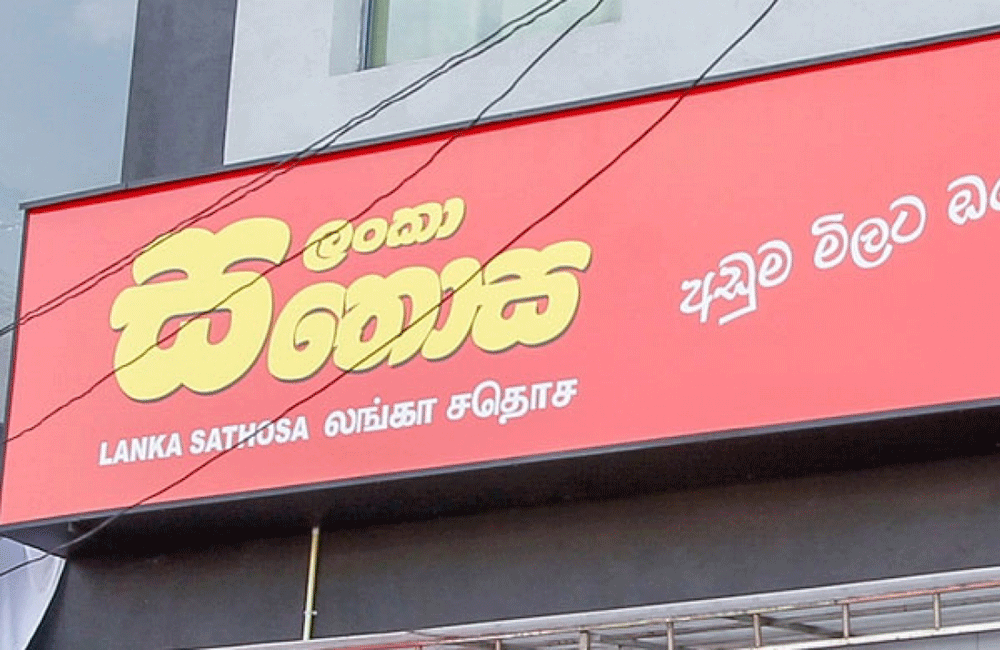
Festive season : Lanka Sathosa reduces prices of 10 essential food items
The state-owned supermarket chain, ‘Lanka Sathosa’ has reduced the prices of ten (10) essential food items in view of the upcoming festive season. The state-owned supermarket chain, ‘Lanka Sathosa’ has reduced the prices of ten (10) essential food items in view of the upcoming festive season.
Lanka Sathosa announced that the price reduction will be effective from today (Dec 15) until December 31, 2023.
The revised prices are as follows: Lanka Sathosa announced that the price reduction will be effective from today (Dec 15) until December 31, 2023.
The revised prices are as follows:
• Sathosa Milk Powder – reduced by Rs. 08 (New price - Rs. 940)
• Imported Canned Fish 425g – reduced by Rs.55 (New price - Rs. 595)
• Imported Canned Fish 255g – reduced by Rs. 10 (New price - Rs. 280)
• Local Canned Fish 425g – reduced by Rs. 15 (New price - Rs. 530)
• Imported Potatoes – reduced by Rs. 15 (New price - Rs. 300)
• Local Potatoes- reduced by Rs. 15 (New price - Rs. 300)
• Red Raw Rice 01kg – reduced by Rs. 02 (New price - Rs. 218)
• White Raw Rice 01kg – reduced by Rs. 05 (New price - Rs. 207)
• Chickpeas 01kg - reduced by Rs. 05 (New price - Rs. 535)
• White Sugar 01kg – reduced by Rs. 60 (New price - Rs. 275)
• Watana Dhal 01kg – reduced by Rs. 40 (New price - Rs. 225)
• Wheat Flour 01kg – reduced by Rs. 12 (New price - Rs. 195)
Meanwhile, Lanka Sathosa also reported that eggs, sugar and onions will be sold at Rs. 35 (each), Rs. 275 (per kg) and Rs. 400 (per kg), respectively, throughout the festive season.
This price slash comes against a backdrop where egg vendors have refused to sell eggs below Rs. 55, and the prices of onions, too, have soared in the local market.
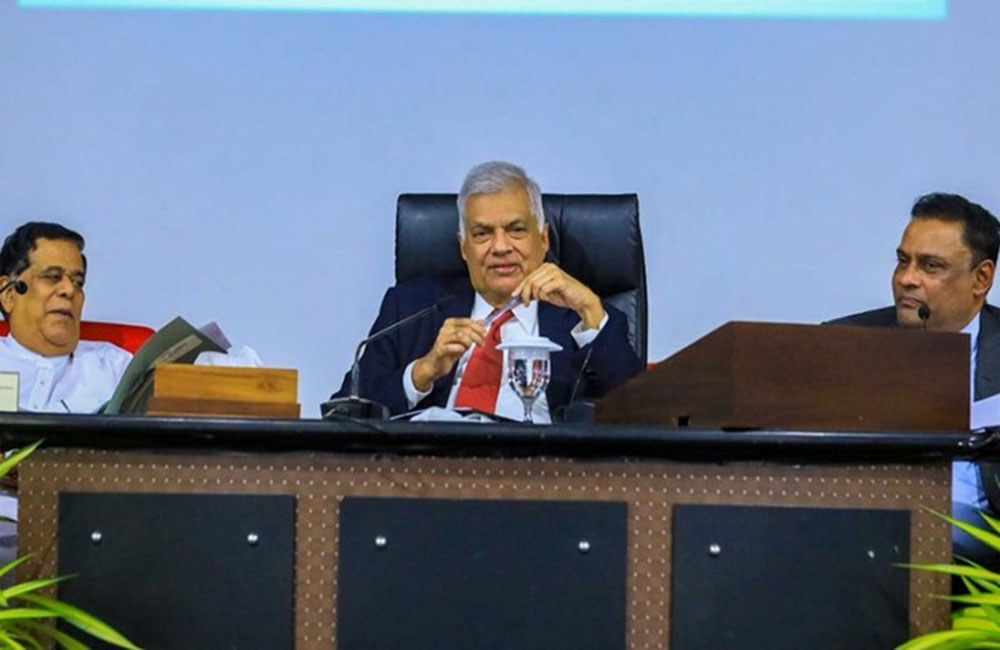
President instructs officials to prohibit unauthorized construction from Boralanda up to Horton Plains
President Ranil Wickremesinghe has urged the relevant authorities to promptly address the issue of unauthorized constructions in the Ohia area, spanning from Boralanda to Horton Plains.
Noting the significant environmental degradation resulting from these illicit structures, the President emphasized the need for immediate intervention to avert potential serious consequences in the future.
President Wickremesinghe conveyed these directives during his participation in the Special District Coordination Committee (DCC) meeting in Badulla District, convened at the Auditorium of the Uva Provincial Library yesterday (16).
Furthermore, President Ranil Wickremesinghe has directed officials to communicate in writing with relevant institutions when approving building plans within the district. During the meeting, the President sought updates on the disaster relief program for those affected in Badulla district. He instructed officials to provide a comprehensive report on areas susceptible to future disasters.
The meeting also addressed challenges in resettling displaced individuals and the legal release of land from estate companies. President Wickremesinghe emphasized the need for prompt discussions with plantation companies to overcome obstacles.
In attendance were political authorities of Badulla district along with government officials. The extensive discussion covered various issues in education, health, highways, and transportation within the district. The President took proactive measures to address and resolve some of the identified challenges.
Additionally, discussions covered the development plans slated for implementation in the Badulla district in 2024.
President Ranil Wickremesinghe outlined the vision for a decentralized budget for districts starting next year. This approach aims to prioritize the district’s development needs by consolidating funds from the Upcountry development program, ministry allocations, provincial council disbursements, and foreign aid projects. The President anticipates commencing these initiatives by July of the upcoming year.
In further remarks, President Ranil Wickremesinghe expressed his gratitude to all participants for their engagement in the discussion, despite it being on a Saturday. He highlighted the stagnation in the country’s development over the past three years, citing halted projects, including highway construction. With the successful collaboration with the International Monetary Fund (IMF), development projects are set to recommence systematically. Acknowledgment from creditors, including the Paris Organization, India and China, has paved the way for renewed discussions and foreign aid. The President expects to provide updates on projects slated for immediate commencement in the early months of the coming year.
The President outlined the financial measures for development, emphasizing the allocation of funds from the 2024 budget. This funding, collected through income tax, is crucial for the country’s developmental needs. The President emphasized the need to initiate projects with dedication, acknowledging that while all projects cannot be launched in a single year, a gradual commencement is anticipated with a focus on prioritized initiatives.
Starting from the next fiscal year, the districts will receive a decentralized budget based on the available number of seats. Additionally, the Upcountry program, aimed at supporting isolated mountain villages, has commenced, with each divisional secretariat receiving 10 million. Plans are in place to incrementally increase this support.
Financial allocations to provincial councils will contribute to the overall funding available to each district. Capital expenditure at the ministry level, along with foreign aid-supported projects, will be integrated into the funding structure. President Wickremesinghe highlighted that this comprehensive approach, combining resources from various channels, aims to commence the work by July 2024.
President Ranil Wickremesinghe expressed plans to establish committees at the provincial level, collaborating with district development committees. These committees, comprising district chairpersons, members and officers, will oversee development activities in their respective divisional secretariats. Provincial Council projects will be initiated through the Governor, while Central Government projects will be managed by relevant institutions.
In addition, President Wickremesinghe highlighted the initiation of the agriculture modernization program, with active participation from the private sector. A designated individual will be appointed to collaborate between the Ministry of Agriculture and the private sector. Furthermore, the transformation of Agrarian Services centres into modernization centres is in the pipeline.
A significant initiative planned for February involves the commencement of a program to grant freehold deeds to individuals holding licenses under the Land Development Ordinance. The President anticipates substantial progress through these strategic measures.
During the discussion, the President addressed various issues, and here are some key concerns raised along with his responses:
Question:
Attention has been drawn several times to the need for an increase in the compensation provided for houses and buildings affected by calamities. Mr. President, is there any course of action that can be taken in this regard?
Answer:
There are issues related to increasing the compensation amount. Although it may not be feasible next year, I believe it can be increased in the next few years. However, we need a new plan. Another point that should be emphasized is: Who approves these housing plans? If this continues, action will be taken against both the Municipal Council and the officer responsible. In the event of these constructions collapsing, the municipality will bear the financial burden. If plans are approved for construction, the related criteria should be provided in writing and acted upon accordingly. Such activities should not be allowed to proceed arbitrarily.
During my visit to Horton Plains, I observed several ‘Guest Houses’ built above the Ohia, near the river. If all of them draw water from the stream, it will deplete the water supply. Therefore, I request that no construction be allowed in the Ohia area until we discuss and inform.
If this situation persists, high-level tourists will avoid coming to these areas. Additionally, another consequence is that the city and the area below will suffer from a lack of water taken from the river. Hence, I request not to permit construction in the area above Boralanda. In the Blackpool area as well, the region has been adversely affected by such informal constructions
Question:
The problems faced by the people of Badulla due to the Uma Oya project have not yet been resolved. Mr. President, we request your intervention in this matter.
Answer:
A comprehensive analysis of the impact of the Uma Oya project on the Badulla district is essential. The Uma Oya project was initiated during President Premadasa’s tenure, but due to numerous issues, it was rejected. Uma Oya proposed redirecting the Mahaweli as per the plan, leading to various problems associated with the tunnel. To address these issues comprehensively, as mentioned earlier, a thorough analysis of the Badulla district is required.
Question:
We urgently request the expedited repair of the internal roads and drainage system in the Dikarawa area, which has been damaged by the Uma Oya project.
Answer:
Regrettably, due to the economic crisis faced by the country, the I Road project had to be halted. However, we are now prepared to resume the project. Consequently, we anticipate discussions on such projects and the commencement of related work.
Ministers Mr.Nimal Siripalada Silva, Mr. Harin Fernando, State Ministers Mr. Chamara Sampath Dasanayake, Mr. Aravinda Kumar, Uva Provincial Governor Mr. A.J.M. Muzammil, Member of Parliament and Chairman of the Badulla District Coordination Committee Major Sudarshan Denipitiya, Senior Advisor to the President and Member of Parliament Mr. Vadivel Suresh, Chairman of the Uva Provincial Council Mr. A.M. Buddhadasa, along with political representatives from the district, including President’s Secretary Mr. Saman Ekanayake and Badulla District SecretaryMr. Panduka Sri Prabhat Abeywardena, were also present at this occasion. (PMD)
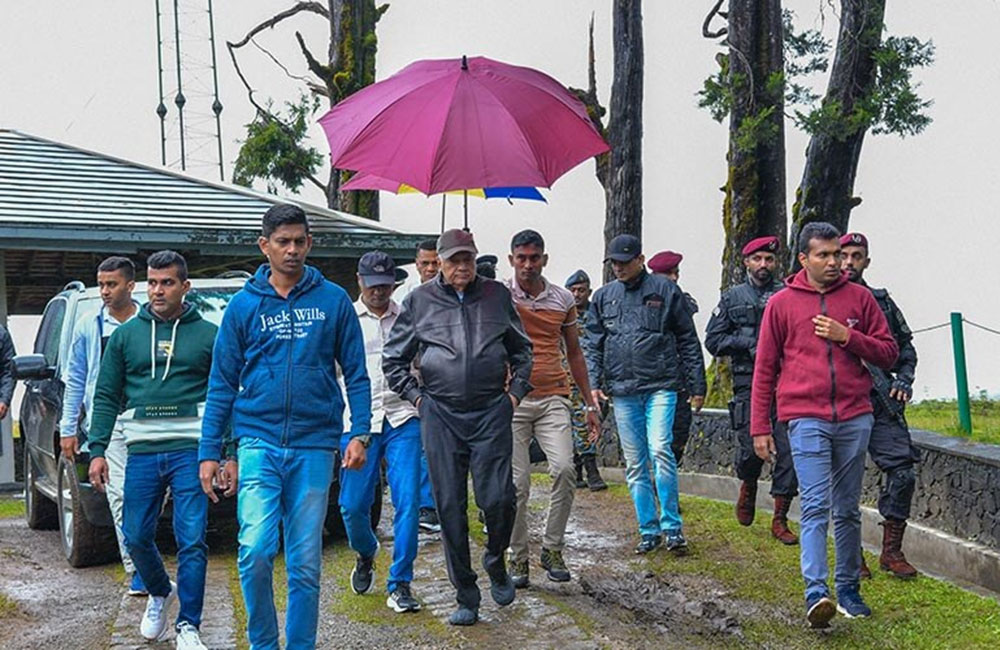
President visits Horton Plains National Park, reveals new plan
President Ranil Wickremesinghe emphasized the necessity to transform Horton Plains National Park and its surrounding areas into a premier destination for high-end tourists. The President made these remarks earlier today (15) during his participation in an observation tour in Horton Plains National Park.
Following a visit to the site office of Horton Plains National Park, President Wickremesinghe recorded his insights in the special guest book and subsequently participated in an observation tour of the park along the Ohio route.
President Ranil Wickremesinghe further conducted a survey of the lands owned by the Department of Wildlife and Forest Conservation related to Horton Plains National Park using map sources. During this assessment, he directed officials to compile a comprehensive map encompassing all lands associated with both Horton Plains National Park and its associated region, with a prompt submission deadline.
The President emphasized the potential for the nation to generate significant foreign exchange by strategically developing Horton Plain and its surrounding areas, known for their appeal to both local and international tourists, with a focus on attracting high-end tourists. Additionally, the President underscored the importance of ensuring that all activities align with environmental sustainability and adhere to eco-friendly practices.
President Wickremesinghe further inquired about the living conditions of the residents in the villages surrounding the park, highlighting the potential improvement in their lives through the promotion of the tourism industry.
Subsequently, the President conducted an observation of the road passing through the Udaveriya Estate and its vicinity. (PMD)
Page 84 of 535